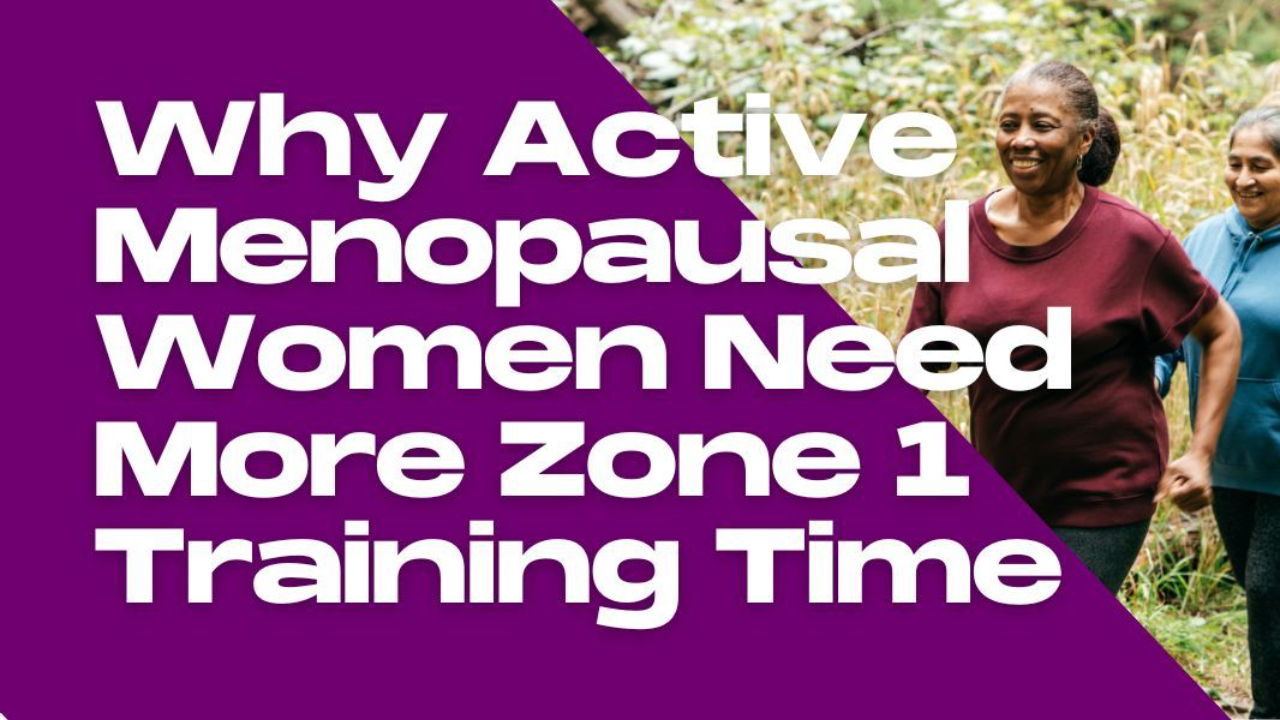
Why Active Menopausal Women Need More Zone 1 Training Time
Sep 13, 2023
Chances are you’re not going easy enough often enough.
By Selene Yeager
We talk an awful lot about running, jumping, and lifting heavy sh*t here at Feisty Menopause. Because if we want to keep performing our best through and beyond the menopause transition, sprint interval training, plyometrics, and resistance training are key ingredients for long-term success, especially as our hormones shift and decline. But for all that hard work to pay dividends, we also need to go truly easy, which is something many of us don’t do.
There are lots of reasons why: truly easy exercise (aka Zone 1*) doesn’t feel “hard enough” to do any good; we work out with others and push to match their pace; we use exercise to blow off stress and have trained our brains that means emptying the tank, or we just feel good and want to go faster/harder.
The problem is it can backfire, especially during our menopausal years when levels of our stress hormone cortisol (which increase with moderate to hard exercise) can be harder to keep in check. As Dr. Carla DiGirolamo explained during episode 142 of Hit Play Not Pause, cortisol is not the enemy. Our stress response, which ramps up cortisol (and other stress hormone) levels, is necessary for maintaining and improving our fitness and for living a healthy life. However, it’s also necessary for that stress response to turn off and for stress hormones to come back down, because if they stay chronically ramped up, we could end up with health issues like elevated blood sugar, high blood pressure, low bone density, decreased cognitive function, and unfavorable body composition changes.
That means making room for low-intensity, Zone 1 training, which as you can see below can be considered “conversational effort.” (Though you’ll find training zone plans that include anywhere from 5 to 7 different zones based off of various heart rate ranges, we keep it simple here and use a three-zone intensity model often used in training research.)
Zone 1: Low-intensity effort. You can hold a conversation, and while you’re breathing harder than if you were puttering around the house, you’re not out of breath.
Zone 2: Moderate intensity effort. You can talk, but only in shorter or broken sentences, because your breathing is more labored.
Zone 3: Hard intensity. You’re not chatting. You’re huffing and puffing.
That often-underappreciated Zone 1, low-intensity training not only helps bring down that stress response, but also builds fitness by improving your ability to use oxygen, burn fat, and clear lactate. That’s why successful athletes spend so much of their training time—about 75 to 85%—going slower and easier to be able to go harder and faster. In fact, a study that analyzed time spent in different intensity zones (based on the 3-zone model) with performance among a group of Ironman triathletes found that better performances were associated with more training time spent in zone 1, and that a high amount of cycling training in zone 2* (i.e. moderate) may contribute to poorer overall performance.
The real magic happens when you pair your easy days with hard days, which are like strong medicine for performance gains. It can take some trial and error to find your personal sweet spot. For primarily endurance-based women, try planning about three easy days a week along with two hard days and one or two moderate days that make up about 15 to 25% of your training time. If your primary activity is resistance training, you can still work in those easy days by planning low-intensity lifting and mobility workouts to complement the days where you go hard.
* Note: This article is based on a simple 3-zone system. There are many articles on the benefits of Zone 2 training right now, which are based off of training models including 5 to 7 zones. In those models Zone 2 is low-intensity training, which would fall under Zone 1 here.
Get Feisty 40+ in Your Inbox
We hate SPAM. We will never sell your information, for any reason or send you emails that suck!


